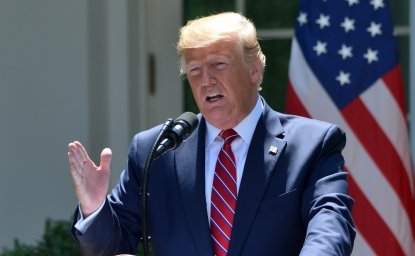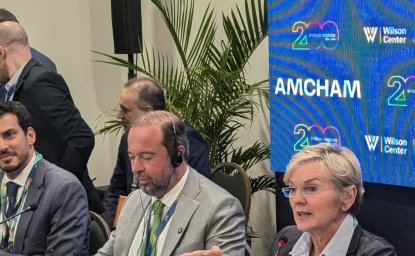
A blog of the Brazil Institute
In 2014, the Ministry of Education launched the National Education Plan (Plano Nacional de Educação), an agenda of goals and strategies to improve the quality of and access to education in Brazil within the next ten years. One of its principal goals is to achieve the universalization of education for youth between 15 and 17 years of age by 2016. A recent study conducted by Instituto Ayrton Senna, Instituto Unibanco, and Fundação Brava, however, indicates that it will take 200 years, or 14 generations, for Brazil to reach this goal if current rates of high school evasion continues. In Brazil, one out of every four youth between 15 and 17 years of age is not enrolled in school, and about half of these dropouts never completed their first year of high school.
Although Brazil has made significant progress in boosting access to secondary education the past two decades, it still lags behind its Latin American and Caribbean neighbors when it comes to attrition rates and the quality of secondary education. At its current pace, it would take Brazil 150 years, or 11 generations, to attain the same rate of school attendance as Chile. Brazil has one of the lowest high school graduation rates in Latin America and is plagued by high age-grade distortion rates and high repetition rates.
The study conducted by Instituto Ayrton Senna, Instituto Unibanco, and Fundação Brava reveals that school evasion exacerbates social inequality. Only 50 percent of high school dropouts are employed in the formal sector, in comparison to 77 percent of high school graduates. At 35 years of age, the average family income per capita for high school dropouts is R$643, compared to R$1425 for high school graduates. The probability that the children of dropouts and graduates will complete high school within five-years is 45 percent vs. 77 percent. Overall, the quality of life of those who have graduated from high school is 1.7 times greater than the quality of life of high school dropouts (83 percent vs. 49 percent). The social cost of high school evasion is R$100 billion annually.
These dismal statistics come at a moment when the Ministry of Education is reforming its education system in order to increase high school retention and improve the quality of secondary education. This new high school educational reform, also called the Novo Ensino Médio, aims to establish a flexible competency-based curriculum and extend the school day from four to five hours a day. The proposed school curriculum is divided among obligatory and elective disciplines.
Under the reform, 40 percent of the high school curriculum is flexible. Students can choose the area of knowledge they wish to focus on according to their vocation and aspirations, whether it be pursuing higher education or entering the workforce. The five elective tracks include languages, mathematics, natural sciences, humanities and social sciences, and technical and professional vocational training. The Ministry of Education contends that this diversification will make the curriculum more relevant and interesting to students. A more personalized education will consequently increase retention rates and better assist students in determining their career paths.
The remaining 60 percent of the curriculum consists of the National Common Core Curriculum (Base Nacional Comum Curricular, or BNCC), the mandatory core curriculum to be implemented across every state and municipality in Brazil. The obligatory disciplines under the BNCC are Portuguese and Mathematics. High school students must organize their elective track around the core standards of the BNCC.
The Ministry of Education first announced its intention to create the BNCC in June 2015. After three rounds of revisions over a two-year period, on December 15 2017, the National Education Council (CNE) approved of the final version of the BNCC for preschool and elementary school by a vote of 19 to 3. The federal government ratified the BNCC in a ceremony in the Palácio do Planalto on December 20, 2017. The Ministry of Education is currently reviewing the third version of the BNCC for high school, which is expected to be forwarded to the CNE for approval by January 2018.
Preschools and elementary schools are expected to begin adapting their curriculum to the standards of the BNCC over the course of 2018 in order to achieve full implementation by 2020. Countrywide evaluations, such as the Enem (the standardized Brazilian national exam for high school students), will have one year to align their content to BNCC standards. The BNCC itself will be reevaluated after five years.
The World Bank recently expressed its intent to support implementation of the education reform in Brazil. On 14 December 2017, the World Bank Board of Directors approved a Program-for-Results (PforR) operation for the Brazilian government. The World Bank estimates that the US$250 million program will help 2.4 million students in Brazil by supporting the 27 state secretariats of education in implementing the new secondary education model. US$221 million of the PforR loan will fund educational results focused on regional and socioeconomic equality, and the remaining US$29 million will provide technical assistance.
Public response to the new high school reform has been contentious and tense. Those who support the provisions argue that the flexible curriculum will better prepare students to pursue their professional and academic aspirations. Increased autonomy will therefore increase school retention and graduation rates. Furthermore, the BNCC will create much needed uniformity and unity in educational standards across Brazil. This degree of regulation is currently lacking in Brazil, since school curriculum often varies according to state and municipal guidelines.
Those against the reform argue that parental attitudes, family instability, and economic insecurity are the principal causes of school evasion, and that changing the high school curriculum is fruitless given these environmental factors. Therefore, the solution to address school evasion must address these external factors. This reform also creates the false understanding that every student will have the opportunity to choose from one of the five optional education tracks. However, the reform does not mandate that every school offer these five disciplines. The lack of teachers and necessary resources may prevent a school from being able to offer all five elective tracks.
Opponents of the reform also dispute the belief that a curriculum needs to promote individual choice. In reality, the reform creates a false discourse of autonomy: students’ interests are seldom natural, but are instead a product of socioeconomic conditions since interest is determined by access. This argument is made in defense of students that opt to enroll in the vocational training track, since this choice is arguably a product of necessity rather than interest. Instead of promoting individual choice, organizing curriculum around the interests of youth in reality reproduces social inequality in schools.
Regardless of whether this reform brings much-needed change to high school curriculums or is merely a band-aid to conceal endemic issues in Brazilian society, it is clear that retention rates will continue to decline if the root causes are not addressed. The next few months and years will be decisive as the final version of the BNCC for high school is passed and implementation begins. It remains doubtful that the reform will fully eradicate the causes of school evasion, as issues such as economic insecurity, violence, lack of access, and family instability require multilateral institutional solutions that education reform alone cannot address.
Image credit: Agencia Brasil/Wikimedia Commons
Author


Brazil Institute
The Brazil Institute—the only country-specific policy institution focused on Brazil in Washington—aims to deepen understanding of Brazil’s complex landscape and strengthen relations between Brazilian and US institutions across all sectors. Read more

Explore More in Brazil Builds
Browse Brazil Builds
They're Still Here: Brazil's unfinished reckoning with military impunity



